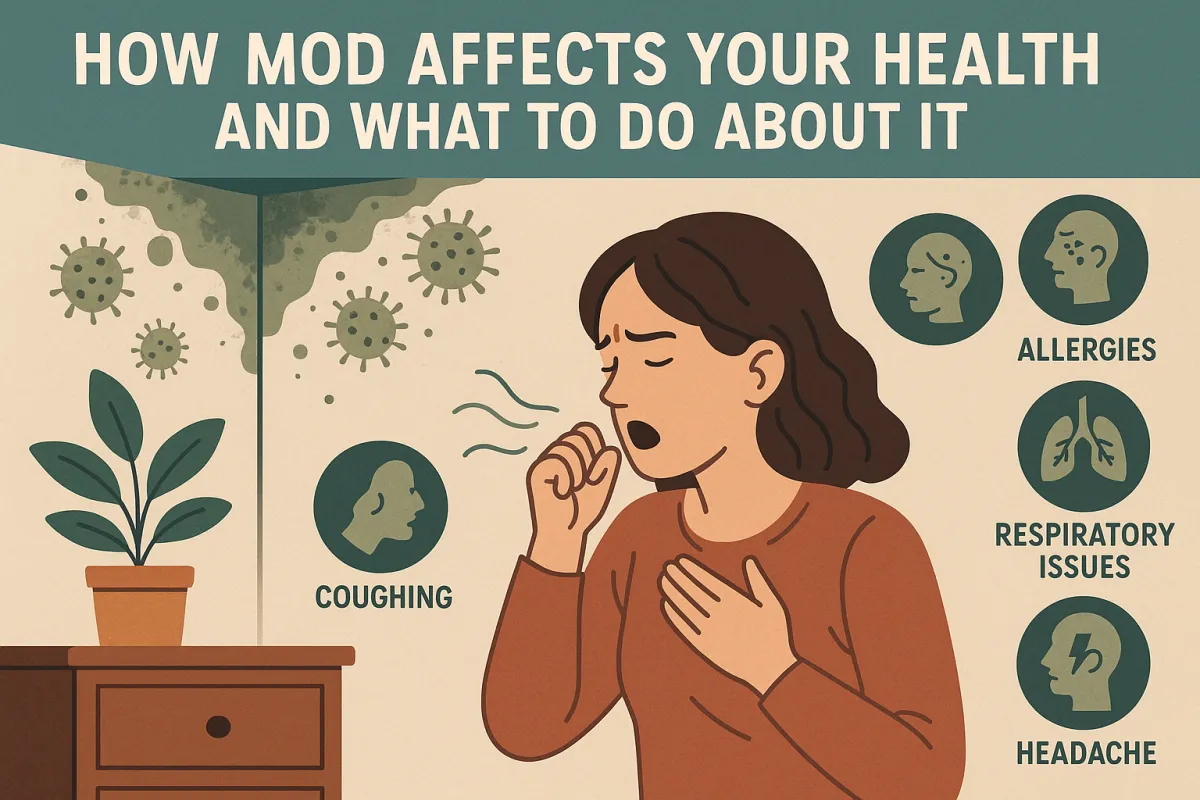Restoration Advice & Tips | Restoration 1 St. Louis Blog

How Mold Affects Your Health and What to Do About It
How Mold Affects Your Health and What to Do About It
Mold exposure can have serious health effects, particularly for vulnerable individuals such as children, the elderly, and those with respiratory conditions. Understanding how mold affects your health and knowing how to address it is essential for maintaining a safe home environment.
1. Health Effects of Mold Exposure
Respiratory Issues: Mold spores can irritate the respiratory system, causing coughing, wheezing, and shortness of breath. Prolonged exposure may lead to chronic respiratory conditions.
Allergic Reactions: Symptoms such as sneezing, runny nose, itchy eyes, and skin rashes are common among individuals sensitive to mold.
Asthma Aggravation: Mold exposure can trigger asthma attacks and worsen symptoms in individuals with asthma.
Long-Term Health Risks: Extended exposure to toxic mold, such as black mold, can lead to severe health problems, including neurological issues and immune system suppression.
2. Identifying Mold in Your Home
Visible Mold Growth: Mold often appears as black, green, or white patches on walls, ceilings, and floors.
Musty Odor: A persistent musty smell is a common sign of hidden mold growth.
Water Damage: Areas with past water damage or high humidity are prone to mold growth.
Health Symptoms: Unexplained health issues that improve when away from home may indicate mold exposure.
3. Immediate Steps to Take if You Detect Mold
Isolate the Area: Prevent mold spores from spreading by sealing off the affected area.
Reduce Moisture: Use dehumidifiers and fans to reduce humidity levels and dry out the area.
Clean Small Areas: For small mold patches, clean with a mixture of water and detergent, avoiding bleach as it may not eliminate mold roots.
Protect Yourself: Wear protective gear, including gloves, goggles, and an N95 mask, when handling mold.
4. Professional Mold Remediation for Severe Cases
Comprehensive Assessment: Professionals conduct thorough inspections to identify hidden mold and moisture sources.
Safe Removal: Certified technicians use advanced techniques to remove mold safely and prevent future growth.
Restoration: After mold removal, damaged materials are repaired or replaced to restore the affected area.
5. Preventing Mold Growth
Control Humidity: Keep indoor humidity levels below 60%, using dehumidifiers if necessary.
Fix Leaks Promptly: Repair any plumbing leaks or roof damage immediately to prevent moisture buildup.
Ensure Proper Ventilation: Use exhaust fans in bathrooms and kitchens to reduce moisture.
Inspect Regularly: Conduct regular home inspections, focusing on areas prone to moisture, such as basements and attics.
6. Protecting Your Family from Mold Exposure
Educate Your Family: Teach family members to recognize signs of mold and report any health symptoms.
Create a Healthy Environment: Maintain good indoor air quality by using air purifiers and ensuring proper ventilation.
Address Mold Immediately: Prompt action is essential to prevent health problems and property damage.
Conclusion
Mold exposure poses significant health risks, making it crucial to address mold issues promptly. By recognizing the signs of mold growth, taking immediate action, and seeking professional remediation when necessary, you can protect your family's health and ensure a safe living environment. Regular maintenance and moisture control are key to preventing mold growth and maintaining a healthy home in St. Louis.
